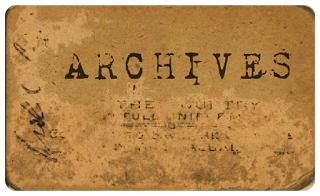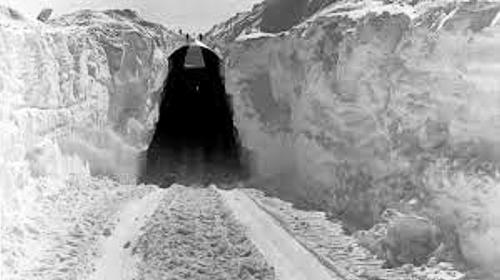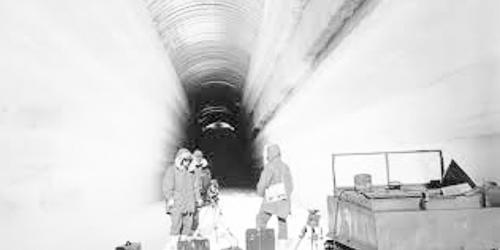From the Tips and Tales Archives

Here is another article we are highlighting from the Tips and Tales Archives. Galen Moses is moderating this column, and we hope to share a "new" past article on a regular basis. Galen's comments are in italics at the end. We hope you enjoy a look back to the past!
DRILLING THROUGH THE SNOW
From October 2012 Tips and Tales
Shared by Whit Scully

Every once in a while I get to thinking about some of the experiences I had during 20 years in the Army. I was in the Corps of Engineers and was also a helicopter and fixed wing aviator. I was lucky to be sent to many unusual and satisfying assignments.
One that proved to be extremely interesting was my assignment to the Army Arctic Research and Development Center from Nov 1962 to Nov '65 during which I spent 15 months in Greenland. Our aircraft were hangared on Thule Air Force Base and the headquarters of the Arctic R&D Center was up about 20 miles on the edge of the icecap at Camp Toto.
Most research was done at Camp Century, which was about 150 miles east at an elevation of about 6000 feet. Camp Century was about 50 feet below the surface, had about 1500 ft.², housed about 35 support and research personnel, snow maintenance equipment and was powered by a nuclear power plant. The only things outside were communication and directional facilities and a snow runway. (The measurements are my guess. The reason I went into so much detail is to give you an idea of the environment of a very interesting research project.)

The drill was redesigned so it could cover the cylinder of snow and a drill was added to the top so it could cut its way up. Although there was a delay in the project, the new mechanism worked well. The drilling continued and each cylinder was sent to a special laboratory for analysis. Our aviation section was responsible for moving all the cylinders to Thule Air Base and helping load them on C-130s.
Everyone was very interested in hearing the results. Each time we had a trip to Camp Century to pick up the cylinders we would try to run down to the project site and talk to the project researchers. The reports that came in were absolutely fascinating. It was determined that the amount of snow accumulation could be identified as to the specific summer, winter and year. This information helped determine temperature changes, wind direction and velocity over time.
The analysis of the content of the snow identified chemical particles which then identified where the particles came from. It was amazing to think that particles could be moved around the earth for hundreds and even thousands of miles and many of them landed in the Arctic snow. The scientists told us they had identified volcano particles from the Mount Vesuvius volcano eruption, the beginning of the accumulation of lead from vehicle exhaust and nuclear dust from Hiroshima and Nagasaki.
Scientists insisted that this project and its continuation has and will provide a vast amount of historical information for our earth which we have never collected before. They explained that the Arctic snow is a wonderful preserver of anything that is captured by the snow because most of these particles don't disappear, all you have to do is to dig deeper to learn about earth's history. I understand that this research was instrumental in reducing the amount of lead in gasoline. Although I had to get used to 70° below zero, I thought this was a wonderful assignment.
Seems like a good time of year for a snow story, even if the snow at Sunnyside isn't as deep or interesting as Whit describes in Greenland. Camp Century operated from 1959 to 1967, according to Wikipedia. It was a preliminary camp for Project Iceworm, whose end goal was to install a vast network of nuclear missile launch sites that could survive a first strike, according to documents declassified in 1996. The missiles were never put in place and the project was abandoned after it was realized that the ice sheet was not as stable as originally assessed, and that the missile basing concept would not be feasible. But a fascinating bit of history. Meanwhile, scientists continue to analyze snow and ice cores taken from locations around the globe. You can learn more at Wikipedia and other online sites, including YouTube videos, under "Camp Century."